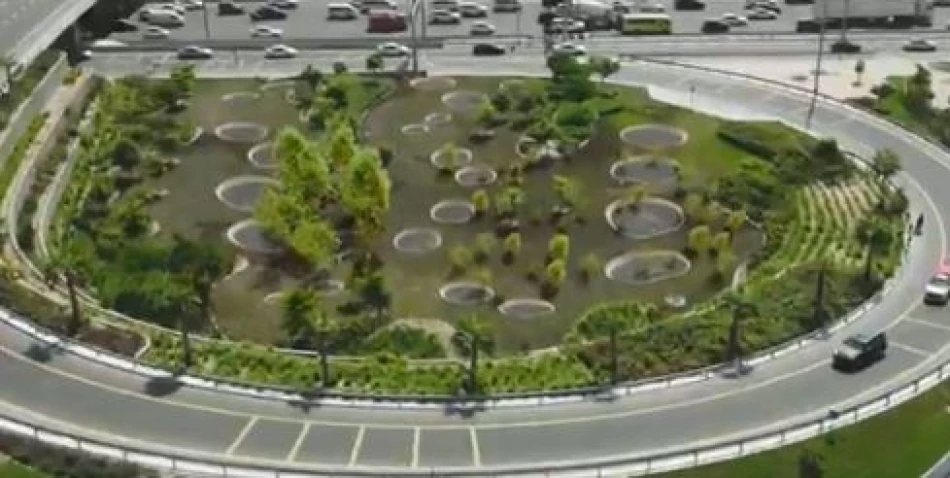
Dubai Municipality Beautifies Major Intersections with Landscape Projects
Dubai Plants 300,000 Trees in $52 Million Green Infrastructure Push
Dubai Municipality has completed a massive landscaping initiative across major intersections and streets, planting over 300,000 trees and shrubs at a cost of 190 million dirhams ($52 million) during the first half of 2025. The project spans more than 3 million square meters and represents a significant acceleration of the emirate's "Green Dubai" vision, which aims to transform the city into a sustainable urban oasis while supporting the broader Dubai Urban Plan 2040.
Strategic Locations Target Maximum Urban Impact
The landscaping projects focused on high-visibility areas that serve as gateways to the emirate. Key locations include the intersection of Al Khail Road with Lateefa bint Hamdan Street, the junction of Sheikh Zayed bin Hamdan Street with Tripoli Street, and Sheikh Rashid Road from Sheikh Khalifa bin Zayed intersection to Port Street. Additionally, work extended along Sheikh Zayed Road from the seventh intersection—the main entry point from Abu Dhabi—and Al Khawaneej Street at its intersection with Al Amardi Street.
This strategic approach mirrors successful urban greening initiatives in Singapore and other leading smart cities, where major thoroughfares serve as green corridors that maximize environmental and aesthetic impact while creating lasting impressions on residents and visitors.
Technology-Driven Sustainability
Smart Irrigation Systems
Dubai Municipality has implemented advanced underground irrigation systems featuring Internet of Things (IoT) technology for remote monitoring and control. These systems place pumps below ground to maximize surface space utilization while enabling continuous performance monitoring and water efficiency optimization.
The remote control capabilities allow for precise water management across the vast network of green spaces, addressing one of the most critical challenges in desert urban environments. This technological approach positions Dubai ahead of many global cities in sustainable landscaping practices.
Native and Adaptive Plant Selection
The project combines indigenous species such as Sidr, Ghaf, and Neem trees with ornamental varieties including Chorisia, Washingtonia, Poinciana, Millingtonia, Albizia, and Bougainvillea. This balanced approach ensures environmental sustainability while maintaining visual appeal—a strategy that reduces long-term maintenance costs and water consumption.
Economic and Social Impact
The investment represents more than aesthetic improvement; it directly supports Dubai's positioning as a global destination for talent and investment. Quality of life initiatives like these have proven crucial for cities competing for international business and residents, particularly in the post-pandemic era where urban livability has become a key differentiator.
Dubai Municipality Director General Marwan Ahmed bin Ghalita emphasized that these projects aim to "establish Dubai's unique urban and aesthetic identity" while reinforcing its leadership as a sustainable global city. The initiative aligns with the Dubai Quality of Life Strategy 2033, which recognizes environmental quality as fundamental to economic competitiveness.
Impressive Scale and Rapid Progress
The current projects added 222,500 square meters of ground cover and flowers to Dubai's green infrastructure. By the end of the first quarter of 2025, Dubai Municipality oversees more than 5.5 million trees and plants, 8.7 million square meters of green lawns, 2 million square meters of seasonal flower areas, 6.3 million square meters of ground cover, and 1.3 million linear meters of green plant barriers.
This represents a significant acceleration from 2024, when the municipality planted approximately 216,500 trees at a rate of 600 trees daily. The geographical area added to the emirate's green space reached 391.5 hectares in 2024, compared to 234 hectares in 2023—a 67% increase that demonstrates the program's expanding momentum.
Regional Leadership in Urban Sustainability
Dubai's approach sets a benchmark for Gulf cities facing similar climate challenges while pursuing rapid urbanization. The integration of smart technology with large-scale greening initiatives offers a replicable model for other desert cities worldwide. The project's emphasis on creating unified aesthetic gateways with decorative barriers and adaptive lighting systems that change colors for national occasions showcases how environmental initiatives can reinforce cultural identity.
As global cities increasingly compete on sustainability metrics, Dubai's substantial investment in green infrastructure positions the emirate as a leader in demonstrating how rapid urban development can coexist with environmental stewardship. The project's success will likely influence urban planning strategies across the Middle East and other arid regions globally.
Most Viewed News

 Sara Khaled
Sara Khaled






